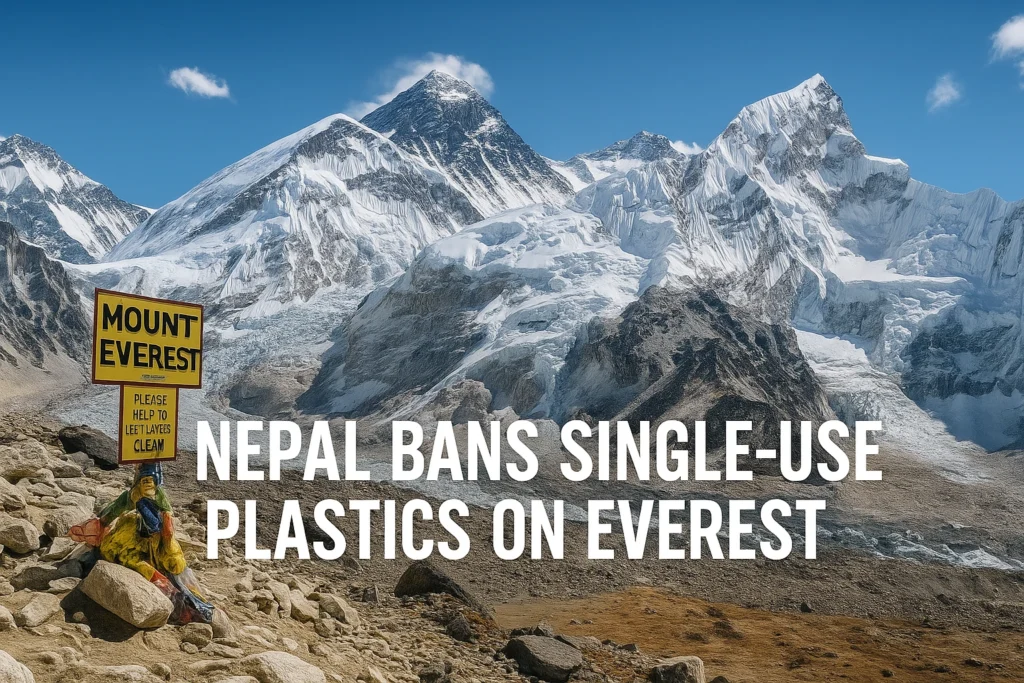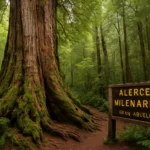The wind whips around you, carrying the whispers of ancient peaks and the scent of pine. You stand on a narrow path, dwarfed by the colossal beauty of the Himalayas, their snow-capped summits piercing the brilliant blue sky. For generations, these mountains have been a symbol of untouched grandeur, a sanctuary for both human spirit and diverse wildlife. Yet, beneath this majestic facade, a silent crisis has been unfolding – a creeping tide of plastic waste, threatening to transform the world’s highest peaks into the world’s largest landfill.
The Unseen Scar: How Plastic Chokes the Roof of the World
Imagine a trek to Everest Base Camp, a journey of a lifetime for many. Alongside your backpack, your sturdy boots, and your unwavering determination, there’s another ubiquitous companion: plastic. Water bottles, energy bar wrappers, disposable cutlery, and countless other single-use items, remnants of human ambition and convenience, often find their final resting place along these breathtaking trails. Each year, thousands of adventurers, in their pursuit of the ultimate high, inadvertently leave behind a trail of synthetic debris. This isn’t just an aesthetic blight; it’s an ecological catastrophe in slow motion, slowly strangling the very life out of one of Earth’s most precious ecosystems.
Consider the sheer scale of the problem. In 2024 alone, a staggering 27,000 kilograms of plastic waste, alongside an unsettling 21,736 kilograms of human waste, were painstakingly collected from the slopes of Mount Everest. Everest, once the pinnacle of human achievement and a beacon of exploration, now grapples with the grim moniker of “the world’s highest garbage dump.” It’s a stark and sobering reminder of humanity’s impact, even in the most remote and seemingly pristine corners of the globe. But the challenge isn’t confined to Everest’s icy reaches. Trails winding through the Annapurna and Manaslu regions face similar predicaments, with discarded wrappers, bottles, and even abandoned climbing gear becoming unsettling markers along paths that should be pristine. The vibrant prayer flags, once symbols of hope and spiritual connection, now often flutter alongside plastic bags caught in the wind.
Why is single-use plastic such a menace in this delicate environment? The answer lies in its inherent properties and the unforgiving conditions of the high Himalayas. Plastic, by its very nature, is non-biodegradable. In the harsh, high-altitude conditions of the Himalayas, where decomposition rates are already significantly slowed due to extreme cold, low oxygen, and reduced microbial activity, plastic barely breaks down at all. A plastic bottle discarded today could remain largely intact for hundreds of years, perhaps even a millennium, a perpetual scar on the landscape, slowly degrading into harmful microplastics that permeate the soil and water.
And when there’s no proper waste management infrastructure in these remote areas, the default solution often becomes burning. This practice, however, is far from a solution. It releases a toxic cocktail of harmful chemicals – dioxins, furans, and heavy metals – into the already thin mountain air, polluting the very atmosphere that sustains life for both humans and wildlife. Imagine breathing in the fumes of burning plastic instead of the crisp, clean mountain air. Beyond the visible pollution and air contamination, the insidious nature of plastic poses a grave threat to wildlife. Animals, from elusive snow leopards to various bird species, mistaking colorful plastic fragments for food, often ingest it, leading to agonizing internal injuries, blockages in their digestive systems, and ultimately, a slow, painful death. The delicate balance of this unique ecosystem is being systematically undermined, piece by plastic piece.
The urgency of this crisis has not gone unnoticed. The Khumbu region (home to Mount Everest) had previously attempted to address the issue with a ban on plastics thinner than 30 microns back in 2020. However, without robust enforcement mechanisms, proper awareness campaigns, and sustainable alternatives, the impact was negligible. The time for half-measures has passed. The sheer volume of waste, the increasing number of trekkers, and the visible degradation of these sacred mountains have pushed Nepal to a critical turning point.
A Bold Decree: Nepal’s Pledge to a Plastic-Free Himalaya
In a landmark decision, echoing a growing global consciousness and recognizing the critical state of its natural wonders, Nepal has taken a monumental step to safeguard its natural heritage. Effective July 2025, the government has declared a comprehensive and ambitious ban on single-use plastics across all its major trekking routes. This includes not just the iconic Everest Base Camp trail, but also the breathtaking Annapurna Circuit, the serene Langtang Valley, and many other popular routes that draw adventurers from around the globe. This bold initiative is not merely about curbing visible pollution; it’s a profound commitment to preserving Nepal’s invaluable natural legacy, protecting its biodiversity, and, crucially, setting a powerful global precedent for truly sustainable tourism in an era of increasing environmental concern. It’s a statement that Nepal, the custodian of the world’s highest peaks, is serious about its environmental responsibility.
This nationwide ban isn’t a vague guideline; it’s a definitive set of rules designed to effect tangible change. From July 2025, trekkers and locals alike will see a significant shift in what is permissible on these sacred trails. Out are plastic bottles, a ubiquitous sight on trails, unless they are explicitly brought down by trekkers as part of a new “carry me back” policy. Gone are the ubiquitous snack wrappers – the crinkly reminders of chips and chocolate bars that often become airborne litter. Disposable cutlery and straws, once commonplace in teahouses and lodges, will also be a thing of the past, along with plastic bags under 40 microns (the standard thin plastic bags often given for small purchases). The aim is to eliminate the source of the problem at its root, moving away from a disposable culture towards one of reuse and responsibility.
For trekkers, this translates into a new era of responsible travel, a paradigm shift in how they engage with the environment. The “Carry Me Back Policy” for Everest climbers is particularly stringent, mandating that each individual must bring back at least 8 kilograms of waste from their high camps – a direct and measurable challenge to the “leave no trace” philosophy. This isn’t just about personal waste; it’s about contributing to the collective cleanup effort. Beyond physical waste, even human waste is being addressed with the mandatory use of biodegradable “poop bags” above base camp, a crucial step in managing an often-overlooked source of pollution in high-altitude environments. While the finer details of enforcement are still being ironed out, the government has signaled that violations will be met with strict penalties, ranging from fines to potential blacklisting for repeat offenders, ensuring that the rules carry real consequences.
But this isn’t about restriction alone; it’s about fostering a new culture of awareness, empowering trekkers, and offering practical, sustainable alternatives. Eco-conscious trekkers are enthusiastically encouraged to embrace reusable water bottles, coupled with portable purification devices (be it advanced UV filters, reliable iodine tablets, or simple but effective water filters), effectively eliminating the need for single-use plastic bottles. Instead of relying on pre-packaged snacks, trekkers are urged to pack their treats in cloth bags, beeswax wraps, or reusable containers, opting for bulk purchases or homemade snacks. Even personal hygiene is being considered, with a push towards biodegradable toiletries like soap, shampoo bars, and toothpaste tablets, minimizing chemical runoff into delicate water sources. The message is clear: adventure responsibly, leaving only footprints and indelible memories, not a trace of waste. This shift requires foresight and preparation, but the rewards for the environment are immeasurable.
The Path Ahead: Navigating Challenges, Forging Collaborations, and Cultivating a Greener Future
The efficacy and ultimate success of Nepal’s ambitious plastic ban hinges on several critical factors, learning from the lessons of the past. Previous attempts at similar prohibitions have unfortunately faltered, primarily due to a glaring lack of infrastructure in these remote, mountainous regions. Himalayan villages often lack proper recycling facilities, forcing locals and businesses to resort to burning or burying waste, inadvertently contributing to the problem. Tourist ignorance also plays a significant role; many visitors arrive unaware of the environmental challenges or the existing regulations, needing clear, proactive education upon entry. And, regrettably, the specter of corruption, where some checkpoints might turn a blind eye to violations for a price, remains a potential hurdle that requires transparent and robust oversight. These are complex, multi-layered challenges that demand comprehensive solutions.
However, there’s a powerful current of local and global support that could propel this initiative to unprecedented success. Organizations like the Sagarmatha Pollution Control Committee (SPCC) are at the forefront of clean-up drives, tirelessly working to reclaim the mountains from the grip of pollution, often involving local communities and youth. Eco-trekking agencies, such as Footprint Adventure, are actively promoting “Carry Me Bag” initiatives, empowering trekkers to become active participants in the solution, turning their waste into a resource to be managed. Moreover, there’s an undeniable international pressure on Nepal. As a global tourism hotspot, the country is keenly aware of the need to shed any perception of being a “polluted” destination. It recognizes that its pristine natural beauty is its greatest asset, and a commitment to sustainability can significantly enhance its appeal on the global stage. This aligns with a growing trend among travelers who prioritize ethical and environmentally responsible tourism.
The economic ramifications of this ban are multifaceted and deserve careful consideration. On one hand, the initial outlay for reusable gear might be higher than for disposables, potentially posing a minor barrier for some trekkers. However, this could also stimulate local economies through the production and sale of sustainable alternatives. On the other, the ban is expected to spur job creation, particularly in waste management, with more guides, porters, and local community members needed to facilitate the responsible handling of refuse, from collection to transportation and processing. This could lead to new income streams for remote communities. And in the long run, this unwavering commitment to sustainability could be a significant boost to tourism, attracting a growing segment of eco-conscious travelers who prioritize destinations that genuinely care for their environment. Nepal could position itself as a global leader in sustainable adventure tourism, a compelling draw for those seeking an authentic, responsible, and truly pristine wilderness experience. It’s a strategic move that could pay dividends for decades to come, ensuring the longevity and health of its vital tourism industry.
Your Role in the Story: Becoming a Responsible Himalayan Adventurer
As an adventurer drawn to the magnetic allure of the Himalayas, you hold a vital role in this unfolding narrative. Your choices, however small they may seem, contribute significantly to the larger picture, shaping the future of these magnificent mountains. Your journey here isn’t just about personal achievement; it’s about guardianship.
Pack Smart, Tread Lightly: This is your fundamental responsibility.
- Embrace the reusable revolution: Invest in a durable, high-quality reusable water bottle and a reliable portable water purifier (be it an advanced UV filter, effective iodine tablets, or a simple but robust filter system). Not only is it profoundly eco-friendly, but it’s also often more economical in the long run than repeatedly buying bottled water.
- Rethink your snacks: Ditch the individually wrapped items. Opt for bulk purchases of snacks like dried fruits, nuts, and granola, storing them in cloth bags, beeswax wraps, or lightweight reusable containers. Consider making your own energy bars or trail mix before you go.
- Be your own waste collector: Always carry a dedicated, sealable trash bag or two for any waste you generate, ensuring not a single wrapper, tissue, or fruit peel is left behind. Remember, “leave no trace” means leaving absolutely nothing but your footprints.
Support the Cause: Make Conscious Choices
- Choose your partners wisely: Seek out eco-friendly trekking agencies that are TIMS-certified (Trekkers’ Information Management System) and actively promote and enforce sustainable practices among their clients and staff. Ask about their waste management policies.
- Lend a hand: Consider joining organized clean-up treks or initiatives. Some responsible tour operators or local conservation groups even offer discounts for volunteers willing to dedicate a portion of their journey to conservation efforts. It’s a tangible way to give back to the mountains.
Spread the Word: Be an Ambassador for Change
- Be an ambassador: Share your knowledge and passion. Politely educate fellow trekkers about the importance of waste reduction, the new regulations, and the fragile nature of the Himalayan ecosystem. Lead by example.
- Demand more: When interacting with tour operators, lodges, and local businesses, consistently demand better environmental policies and practices. Your collective voice as a responsible traveler can create significant pressure for positive change.
A New Dawn for the Himalayas: Leaving a Legacy of Respect
Nepal’s single-use plastic ban is more than just a regulatory change; it’s a profound declaration of intent, a powerful statement to the world. It’s a bold, necessary step towards reclaiming the pristine glory of the Himalayas, ensuring that these majestic peaks remain a source of awe and inspiration for generations to come. Its success hinges on a delicate interplay of robust enforcement, widespread and ongoing education, and unwavering global cooperation from every individual who steps foot on these trails. If implemented effectively and supported by the international trekking community, this initiative has the potential to:
- Restore the Himalayas’ pristine beauty: Allowing the mountains to breathe, their slopes and trails finally free from the suffocating grip of plastic waste, revealing their natural splendor.
- Set a global eco-tourism standard: Inspiring other nations facing similar environmental challenges to follow suit and prioritize environmental stewardship in their own natural wonders, fostering a global movement towards sustainable travel.
- Safeguard Nepal’s tourism economy long-term: Ensuring that the allure of its majestic peaks continues to draw visitors for generations to come, built on a foundation of sustainability, responsibility, and genuine respect for nature.
As you stand beneath the towering peaks, consider the legacy you wish to leave behind. Will it be a fleeting moment of enjoyment, inadvertently marred by the lingering remnants of convenience? Or will it be a conscious choice to “take nothing but pictures, leave nothing but footprints,” embodying the eco-trekker’s mantra and becoming a true guardian of this unparalleled natural treasure? The mountains are ancient witnesses, observing every step, every choice. What will your story be?
Frequently Asked Questions: Navigating the New Rules
Can I still buy water on the trail?
Yes, but the way you do it will change significantly. You’ll be encouraged to purchase water in reusable containers (which you’d ideally carry with you) or utilize the many water purification options available, such as UV filters, iodine tablets, or water filters, to treat local water sources responsibly. Many lodges will also offer safe, boiled water for refilling.
What happens if I’m caught with plastic?
While specific fines and penalties are still being finalized, the government has indicated that they will be strict. Expect to face fines, and repeat offenders could potentially be blacklisted from future treks in Nepal. The emphasis is on deterring violations through both punitive measures and proactive educational outreach at entry points.
Are there any exceptions to the ban?
Generally, essential medical supplies are exempt from the ban, recognizing their critical importance for health and safety. However, trekkers are still responsible for properly managing and carrying out any waste generated from such supplies. Always check the latest official guidelines before your trek.
A Final Reflection: Protecting Our Shared Heritage
The mountains of Nepal are not merely a playground for adventurers; they are a global heritage, a vital ecosystem, and a testament to the raw power and breathtaking beauty of nature. This plastic ban is more than a set of rules; it’s a solemn pledge to protect the very roof of the world, a commitment that resonates far beyond its borders and calls upon all of us to play our part. Your journey to the Himalayas is an unparalleled opportunity to be part of this crucial solution, to contribute to a future where the majesty of these peaks remains unsullied for all to witness and cherish, forever.



